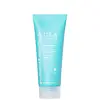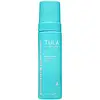What's inside
What's inside
 Key Ingredients
Key Ingredients

 Benefits
Benefits

 Concerns
Concerns

 Ingredients Side-by-side
Ingredients Side-by-side

Sulfur 3%
AntiseborrhoeicWater
Skin ConditioningGlycerin
HumectantBentonite
AbsorbentSodium Cocoyl Isethionate
CleansingPropanediol
SolventSodium Cocoyl Glycinate
Cleansing1,2-Hexanediol
Skin ConditioningMagnesium Aluminum Silicate
AbsorbentAcacia Senegal Gum
MaskingSea Water
HumectantSalix Alba Bark Extract
AstringentLactococcus Ferment Lysate
Skin ConditioningLactobacillus
Skin ConditioningLactobacillus Ferment
Skin ConditioningCamellia Oleifera Leaf Extract
AstringentBetula Alba Bark Extract
MaskingScrophularia Nodosa Extract
Skin ConditioningBetula Alba Juice
AstringentPinus Densiflora Leaf Extract
AntimicrobialAspalathus Linearis Leaf Extract
Skin ConditioningPanthenol
Skin ConditioningCurcuma Longa Root Extract
MaskingBeta Vulgaris Root Extract
Skin ConditioningAlpha-Glucan Oligosaccharide
CleansingPolymnia Sonchifolia Root Juice
Skin ConditioningInulin
Skin ConditioningLactic Acid
BufferingLeuconostoc/Radish Root Ferment Filtrate
AntimicrobialAnanas Sativus Fruit Extract
Skin ConditioningCitrus Aurantium Dulcis Fruit Extract
MaskingCitrus Limon Peel Extract
EmollientEugenia Caryophyllus Flower Extract
AstringentPyrus Communis Fruit Extract
Skin ConditioningPyrus Malus Fruit Extract
Skin ConditioningSalvia Officinalis Leaf Extract
CleansingVanilla Planifolia Fruit Extract
Skin ConditioningSodium Chloride
MaskingSorbitan Oleate Decylglucoside Crosspolymer
CleansingMaltodextrin
AbsorbentButylene Glycol
HumectantSodium Benzoate
MaskingDipropylene Glycol
HumectantHydroxypropyl Cyclodextrin
MaskingPotassium Sorbate
PreservativeCitric Acid
BufferingQuartz
AbrasiveChlorophyllin-Copper Complex
AntioxidantSodium Cocoate
CleansingCoconut Acid
CleansingSodium Isethionate
CleansingCI 77891
Cosmetic ColorantSulfur 3%, Water, Glycerin, Bentonite, Sodium Cocoyl Isethionate, Propanediol, Sodium Cocoyl Glycinate, 1,2-Hexanediol, Magnesium Aluminum Silicate, Acacia Senegal Gum, Sea Water, Salix Alba Bark Extract, Lactococcus Ferment Lysate, Lactobacillus, Lactobacillus Ferment, Camellia Oleifera Leaf Extract, Betula Alba Bark Extract, Scrophularia Nodosa Extract, Betula Alba Juice, Pinus Densiflora Leaf Extract, Aspalathus Linearis Leaf Extract, Panthenol, Curcuma Longa Root Extract, Beta Vulgaris Root Extract, Alpha-Glucan Oligosaccharide, Polymnia Sonchifolia Root Juice, Inulin, Lactic Acid, Leuconostoc/Radish Root Ferment Filtrate, Ananas Sativus Fruit Extract, Citrus Aurantium Dulcis Fruit Extract, Citrus Limon Peel Extract, Eugenia Caryophyllus Flower Extract, Pyrus Communis Fruit Extract, Pyrus Malus Fruit Extract, Salvia Officinalis Leaf Extract, Vanilla Planifolia Fruit Extract, Sodium Chloride, Sorbitan Oleate Decylglucoside Crosspolymer, Maltodextrin, Butylene Glycol, Sodium Benzoate, Dipropylene Glycol, Hydroxypropyl Cyclodextrin, Potassium Sorbate, Citric Acid, Quartz, Chlorophyllin-Copper Complex, Sodium Cocoate, Coconut Acid, Sodium Isethionate, CI 77891
Salicylic Acid 2%
MaskingWater
Skin ConditioningSodium Methyl 2-Sulfolaurate
CleansingDisodium 2-Sulfolaurate
CleansingDisodium Laureth Sulfosuccinate
CleansingLactococcus Ferment Lysate
Skin ConditioningMelaleuca Alternifolia Leaf Oil
AntioxidantAzelaic Acid
BufferingMorinda Citrifolia Extract
AstringentGlycyrrhiza Glabra Root Extract
BleachingVaccinium Angustifolium Fruit Extract
Skin ProtectingZingiber Officinale Root Extract
MaskingLactic Acid
BufferingHydrolyzed Algin
Glycerin
HumectantCitric Acid
BufferingPhospholipids
Skin ConditioningCaprylyl Glycol
EmollientSodium Chloride
MaskingBenzoic Acid
MaskingSodium Hydroxide
BufferingSodium Glycolate
BufferingTrisodium Dicarboxymethyl Alaninate
Butylene Glycol
HumectantChlorphenesin
AntimicrobialSodium Benzoate
MaskingEthylhexylglycerin
Skin ConditioningPhenoxyethanol
PreservativeSalicylic Acid 2%, Water, Sodium Methyl 2-Sulfolaurate, Disodium 2-Sulfolaurate, Disodium Laureth Sulfosuccinate, Lactococcus Ferment Lysate, Melaleuca Alternifolia Leaf Oil, Azelaic Acid, Morinda Citrifolia Extract, Glycyrrhiza Glabra Root Extract, Vaccinium Angustifolium Fruit Extract, Zingiber Officinale Root Extract, Lactic Acid, Hydrolyzed Algin, Glycerin, Citric Acid, Phospholipids, Caprylyl Glycol, Sodium Chloride, Benzoic Acid, Sodium Hydroxide, Sodium Glycolate, Trisodium Dicarboxymethyl Alaninate, Butylene Glycol, Chlorphenesin, Sodium Benzoate, Ethylhexylglycerin, Phenoxyethanol
 Reviews
Reviews

Ingredients Explained
These ingredients are found in both products.
Ingredients higher up in an ingredient list are typically present in a larger amount.
Butylene Glycol (or BG) is used within cosmetic products for a few different reasons:
Overall, Butylene Glycol is a safe and well-rounded ingredient that works well with other ingredients.
Though this ingredient works well with most skin types, some people with sensitive skin may experience a reaction such as allergic rashes, closed comedones, or itchiness.
Learn more about Butylene GlycolCitric Acid is an alpha hydroxy acid (AHA) naturally found in citrus fruits like oranges, lemons, and limes.
Like other AHAs, citric acid can exfoliate skin by breaking down the bonds that hold dead skin cells together. This helps reveal smoother and brighter skin underneath.
However, this exfoliating effect only happens at high concentrations (20%) which can be hard to find in cosmetic products.
Due to this, citric acid is usually included in small amounts as a pH adjuster. This helps keep products slightly more acidic and compatible with skin's natural pH.
In skincare formulas, citric acid can:
While it can provide some skin benefits, research shows lactic acid and glycolic acid are generally more effective and less irritating exfoliants.
Most citric acid used in skincare today is made by fermenting sugars (usually from molasses). This synthetic version is identical to the natural citrus form but easier to stabilize and use in formulations.
Read more about some other popular AHA's here:
Learn more about Citric AcidGlycerin is already naturally found in your skin. It helps moisturize and protect your skin.
A study from 2016 found glycerin to be more effective as a humectant than AHAs and hyaluronic acid.
As a humectant, it helps the skin stay hydrated by pulling moisture to your skin. The low molecular weight of glycerin allows it to pull moisture into the deeper layers of your skin.
Hydrated skin improves your skin barrier; Your skin barrier helps protect against irritants and bacteria.
Glycerin has also been found to have antimicrobial and antiviral properties. Due to these properties, glycerin is often used in wound and burn treatments.
In cosmetics, glycerin is usually derived from plants such as soybean or palm. However, it can also be sourced from animals, such as tallow or animal fat.
This ingredient is organic, colorless, odorless, and non-toxic.
Glycerin is the name for this ingredient in American English. British English uses Glycerol/Glycerine.
Learn more about GlycerinLactic Acid is another well-loved alpha hydroxy acid (AHA). It is gentler than glycolic acid but still highly effective.
Its main role is to exfoliate the surface of the skin by loosening the “glue” that holds dead skin cells together. Shedding those old cells leads to smoother, softer, and more even-toned skin.
Because lactic acid molecules are larger than glycolic acid, they don’t penetrate as deeply. This means they’re less likely to sting or irritate, making it a great choice for beginners or those with sensitive skin.
Like glycolic acid, it can:
Lactic acid also acts as a humectant (like hyaluronic acid). It can draw water into the skin to improve hydration and also plays a role in the skin's natural moisturizing factor (NMF) in the form of sodium lactate.
Studies show it can boost ceramide production to strengthen the skin barrier and even help balance the skin’s microbiome.
To get results, choose products with a pH between 3-4.
Lower strengths (5-12%) focus on surface exfoliation; higher strengths (12% and up) can reach deeper in the dermis (deeper, supportive layer) to improve skin texture and firmness over time.
Though it was originally derived from milk, most modern lactic acid used in skincare is vegan. It is made through non-dairy fermentation to create a bio-identical and stable form suitable for all formulations.
When lactic acid shows up near the end of an ingredient list, it usually means the brand added just a tiny amount to adjust the product’s pH.
Legend has it that Cleopatra used to bathe in sour milk to help reduce wrinkles.
Lactic acid is truly a gentle multitasker: it exfoliates, hydrates, strengthens, and brightens. It's a great ingredient for giving your skin a smooth, glowing, and healthy look without the harshness of stronger acids.
Read more about some other popular AHA's here:
Learn more about Lactic AcidLactococcus Ferment Lysate is a postbiotic created by fermenting Lactoccus lactis, a type of bacteria more commonly used to create Lactic acid.
Postbiotics are inactive molecules produced by probiotic bacteria that provide skin benefits.
This ingredient offers promising benefits, but it is relatively new and more evidence is needed to prove its efficacy. The manufacturer claims this ingredient:
A study from 2022 found this ingredient helped protect skin against damaged from UV exposure (though this should not replace your sunscreen!).
The lysate in the ingredient name refers to a fluid that forms from breaking down the cell membrane.
Learn more about Lactococcus Ferment LysateSodium Benzoate is a preservative. It's used in both cosmetic and food products to inhibit the growth of mold and bacteria. It is typically produced synthetically.
Both the US FDA and EU Health Committee have approved the use of sodium benzoate. In the US, levels of 0.1% (of the total product) are allowed.
Sodium benzoate works as a preservative by inhibiting the growth of bacteria inside of cells. It prevents the cell from fermenting a type of sugar using an enzyme called phosphofructokinase.
It is the salt of benzoic acid. Foods containing sodium benzoate include soda, salad dressings, condiments, fruit juices, wines, and snack foods.
Studies for using ascorbic acid and sodium benzoate in cosmetics are lacking, especially in skincare routines with multiple steps.
We always recommend speaking with a professional, such as a dermatologist, if you have any concerns.
Learn more about Sodium BenzoateChances are, you eat sodium chloride every day. Sodium Chloride is also known as table salt.
This ingredient has many purposes in skincare: thickener, emulsifier, and exfoliator.
You'll most likely find this ingredient in cleansers where it is used to create a gel-like texture. As an emulsifier, it also prevents ingredients from separating.
There is much debate on whether this ingredient is comedogenic. The short answer - comedogenic ratings don't tell the whole story. Learn more about comegodenic ratings here.
The concensus about this ingredient causing acne seems to be divided. Research is needed to understand if this ingredient does cause acne.
Scrubs may use salt as the primary exfoliating ingredient.
Learn more about Sodium ChlorideWater. It's the most common cosmetic ingredient of all. You'll usually see it at the top of ingredient lists, meaning that it makes up the largest part of the product.
So why is it so popular? Water most often acts as a solvent - this means that it helps dissolve other ingredients into the formulation.
You'll also recognize water as that liquid we all need to stay alive. If you see this, drink a glass of water. Stay hydrated!
Learn more about Water